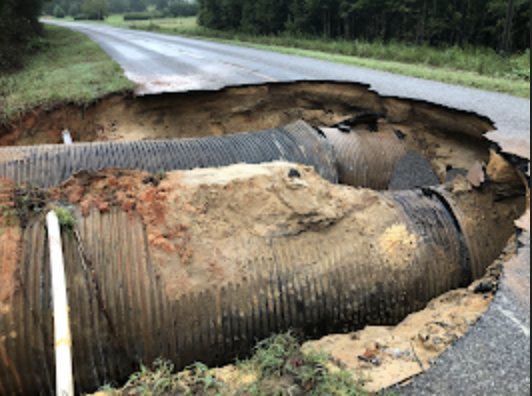First responders
Published 12:00 am Saturday, September 20, 2003
Terrorists attacked Greenville Tuesday night, releasing a nerve agent into the air by staging an accident.
No, that didn’t happen.
It was simulated though as a test of the preparedness of L.V. Stabler Memorial Hospital, the Greenville Fire Department, the Greenville Police Department, the Butler County Sheriff’s Department, GEMS Ambulance and the Butler County Emergency Management Agency.
How did they do on the drill?
By all accounts of those in charge, everything went well.
Donald Zamora, Stabler’s employee relations director, said things ran smoothly.
&uot;It went very well,&uot; he said.
&uot;Everyone knew what their roles were and we were able to coordinate effectively with others.&uot;
The emergency department at the hospital filled with hospital staff that rushed to the area to answer the call.
In the event of an actual attack, these would be the people who would risk their own lives to help those in need.
With this drill, they learn their role in the event of an actual emergency.
&uot;This prepares us to go ahead and be ready for any unknown,&uot; Zamora said.
&uot;We use the drill to identify our shortfalls and how to improve based on research.&uot;
The scenario was simple.
An 18-wheeler carrying a nerve agent flipped on I-65.
As fireman and police approached, it was obvious something wasn’t right.
To get to the accident victims, firemen, using special hazardous materials suits would go in and bring survivors to waiting ambulances.
The drill began at the Butler County Fairgrounds, where firemen staged the accident.
From there, the two victims were taken to the hospital.
However, before the victims can be taken in the hospital they had to be decontaminated.
Once off the ambulance, a nurse began to scrub the victim in an attempt to remove as much of the agent as possible.
If the actual contaminated patient could walk, he or she would then go into a portable shower and be hosed down with water to remove more of the agent.
Directing at the scene was Ginger Salter.
She commanded the area, giving directions where needed and also classifying all those around as contaminated.
Following the shower, the victims were taken inside the ER where nursing teams assessed their vitals and reported to the doctor on duty.
Other nurses were called from the nursing pool to take part and serve as needed.
In the end, one of the victims &uot;died.&uot;
After that, the all clear sounded.
Drill over.
One victim died, one survived.
In the actual event of such an emergency, the numbers filtering through the hospital would be much greater.
What made this drill special?
Zamora said it was the combined work of everyone.
&uot;We have drills all the time,&uot; he said.
&uot;This is the first one that was a combined effort. I really appreciate the cooperation from Chief (Mike) Phillips and Chief (Lonzo) Ingram.&uot;
As for Butler County EMA Director Bob Luman, the drill succeeded for the purpose it was designed.
&uot;For what we were trying to do, we were successful,&uot; he said. &uot;We wanted to drill on setting up the decontamination site at the hospital, so everyone could see how it is used.&uot;
The federal government purchased the decontamination unit, Luman said.
He said he was involved because such an attack did happen, the EMA would play a role in getting people to the scene to help clear things up.
However, he said if the thing did happen, the local fire department and police department would get those EMA resources on the way quickly.
GFD Chief Mike Phillips also felt successful following the drill.
It was really a learning exercise; and that’s what we were doing it for,&uot; he said. &uot;To find those areas [of first response] that we needed to concentrate on, and what we needed to improve on. I think we were successful in doing that.&uot;
He said few problems arose.
&uot;We didn’t find a lot of problems,&uot; Phillips said. &uot;We saw some areas that we need to concentrate on and look at doing better with in the future, such as manpower and equipment. When you start looking at what can happen, you are always going to find areas you’re short in.&uot;
Phillips commended all involved for a good team effort.
&uot;With the relationships we had working between us, the hospital, police force and the other agencies we were involved with in, the exercise really went well,&uot; he said. &uot;That was a good plus. We are going to try to build on that. We were discussing with the hospital plans to meet quarterly and work on these areas more.&uot;
Phillips said more exercises are coming, and they will be bigger.
&uot;We will be planning another exercise later, but on a larger scale,&uot; he said. &uot;It will be more of an all-day exercise, and will include more involvement on the fire department’s end and be a little more in-depth than what we did this time.&uot;


